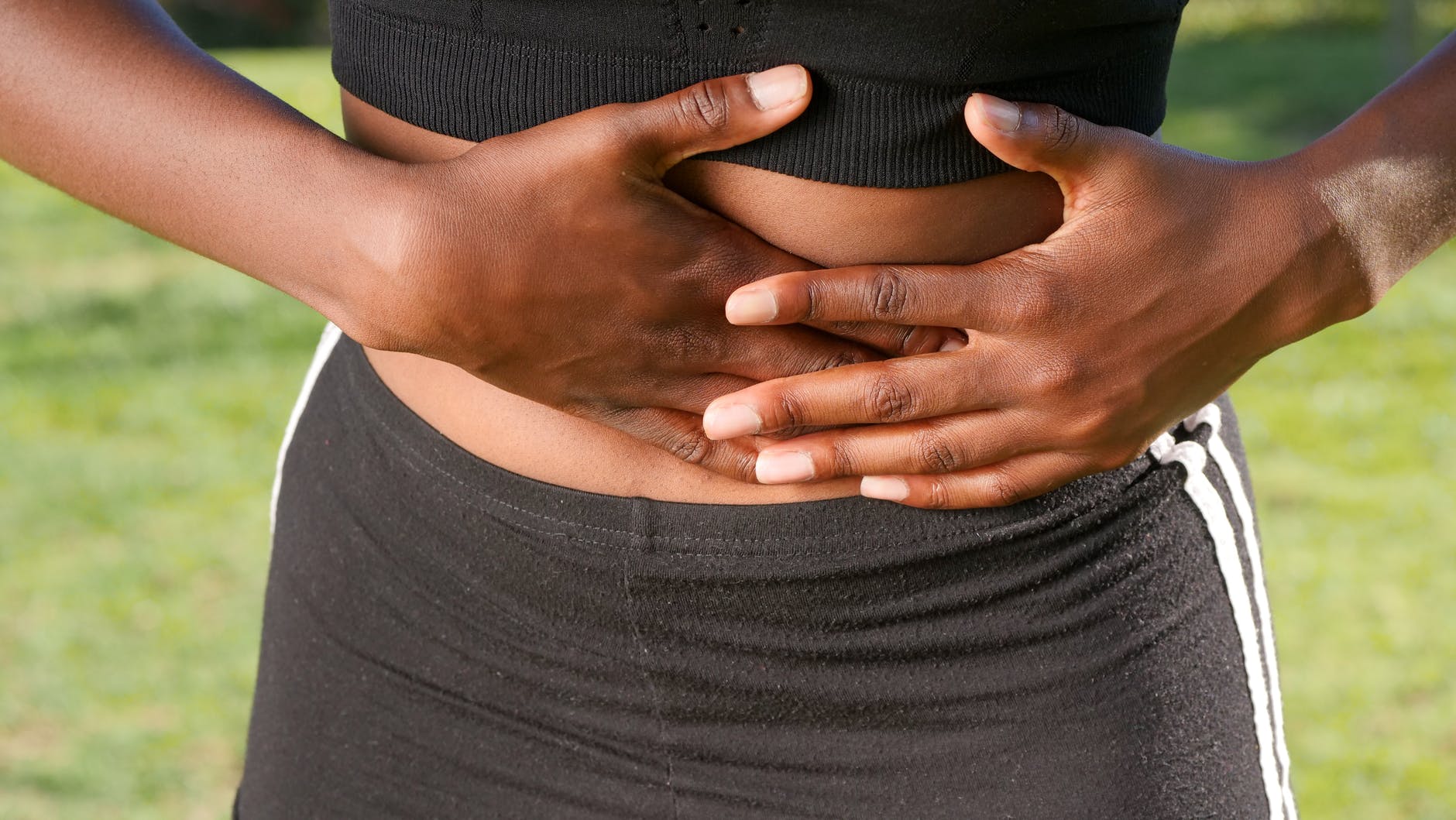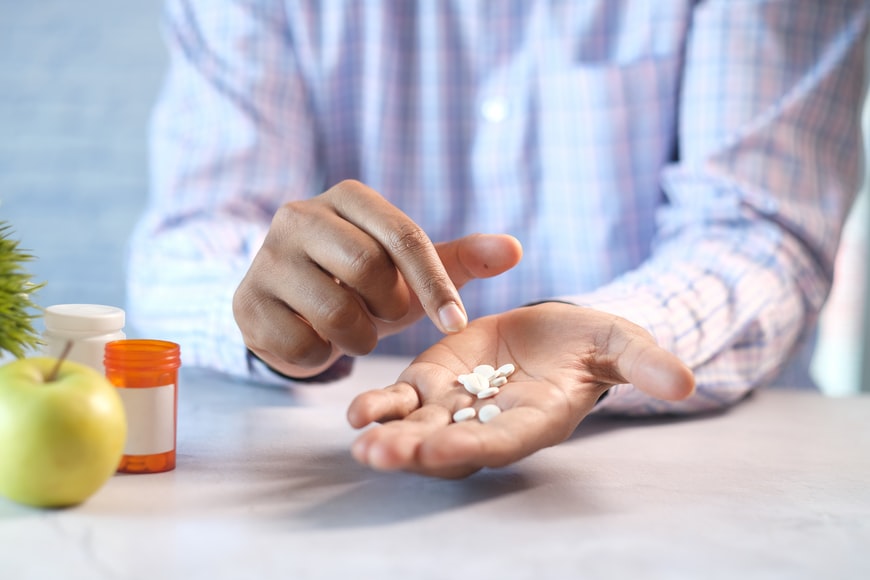It took me almost 10 years to be diagnosed with endometriosis

For years, I experienced excruciating pain whenever I had my period. I’d always thought that the cramps and backaches were “normal” and part of womanhood, even when they turned debilitating and left me unable to walk at times.
After seeing multiple doctors, undergoing countless scans and taking increasingly stronger painkillers, I was finally correctly diagnosed with endometriosis – a chronic, progressive condition that affects an estimated 10 per cent of women globally. This is my story.
When I was younger, I’d occasionally experience severe period cramps that had me breaking out in cold sweat. I never gave much thought about them, simply accepting that this was part and parcel of womanhood.
Then, when I was around 18 years old, my period suddenly couldn’t stop. The usual five days of red turned into a week, which dragged into two months of non-stop bleeding. Looking back, I should have sought help sooner but I didn’t, simply because I was afraid.
I had no idea what was happening with my body and talking about menstrual cycles felt like a taboo topic to a self-conscious teenager. I also figured that the bleeding would eventually stop.
I was wrong. In fact, the bleeding became worse. It was not only prolonged, but also grew increasingly heavier. I started to feel dizzy and lightheaded all the time, which was when I finally confided in my mum and saw a gynaecologist.
He prescribed me with birth control pills and iron supplements. I left the clinic with no real diagnosis, except what my gynaecologist vaguely referred to as a “hormonal imbalance”. In hindsight, heavy and prolonged bleeding is a symptom of endometriosis.
The birth control pills treated the symptoms and I took them consistently for six months. All was well after I went off the pill, but this only lasted for the next two months. By the third month, the uncontrollable bleeding came back.
I was then put on long-term birth control pills which I took monthly for around 10 years, until my husband and I decided to start trying for kids in early 2019 when I was 28.
My second experience going off the pill was smoother than the first time back in 2009. My cycle was quite regular and the cramps were manageable. I attributed this to a more active lifestyle, plus years of gaining healthy weight (which I needed).
But by July 2019, the period pains worsened. I started experiencing lower back pain along with the cramps. I honestly thought that I had sprained or hurt my back because the pain coincided with a HIIT workout event that I attended.
I brushed it off, thinking that I had just overstrained myself. When the pain didn’t subside even after a week, I sought help from a general practitioner (GP), who also said that it was probably just a minor back sprain. He gave me paracetamol and that was it.
Only, it wasn’t. The back pain never went away – in fact, it started getting more and more unbearable. I also noticed that the pain flared up specifically during my period, and would get so bad that I started limping during flares.
I sought a second opinion from another GP. He told me that women’s bodies experience heightened levels of inflammation during our periods, which was likely causing the back pain. I accepted this explanation and left the clinic with stronger, prescription-level painkillers.
Endometriosis is a chronic, progressive condition where the tissue that usually lines the inside of the uterus grows outside of it. This tissue – also called endometrium – responds to hormonal changes in your body the same way that those inside your uterus do.
However, unlike normal endometrium that gets shed during periods, these rogue tissues do not have any way of leaving the body. Instead, they build up, bleed, and release inflammatory chemicals throughout your cycle.
Over time, this can result in scar tissue, nodules, or even adhesions where your organs start sticking together.
Unsurprisingly, the most common endometriosis symptom is painful periods. In a local study, over 80 per cent of patients experienced some degree of pain, and almost 25 per cent missed work or school because of it.
Other symptoms include heavy menstrual bleeding, backache, rectal pain and fertility issues.

Month after month, I experienced debilitating back pain and cramps around the time of my period. I still remember the day when the pain was so severe that I almost could not walk out of the MRT.
I managed to hobble to the platform and just stood there because it hurt too much to move. There was a stabbing, radiating pain on the right side of my lower back that shot down to my legs.
On another occasion, the pain was so severe that I literally could not get out of bed. My body was covered in cold sweat as I called my husband to come home from work to bring me to the doctor (again). Once I hung up, I lay there sobbing because I needed to empty my bladder but couldn’t walk to the toilet.
It took me over 30 minutes, but I eventually managed to crawl on the floor until I reached the washroom, only to enter another state of agony (by this point, it physically hurt to relieve myself whenever I had my period – another endometriosis symptom).
Since the back pain always coincided with my period, I sought help from my gynaecologist several times. He did some scans and referred me to the women’s health arm of a public hospital for further testing.
Nothing conclusive was found and I was diagnosed with dysmenorrhea, which is the medical term for painful menstruation. What’s worse was the fact that I had brought up the possibility of endometriosis multiple times during these gynaecological visits but was always dismissed.
According to Associate Professor Fong Yoke Fai, an endometriosis specialist at Astra Laparoscopic & Robotic Centre, regular ultrasound scans are often unable to conclusively detect the condition. Instead, only trained specialists are able to do “endometriosis mapping” through a transvaginal ultrasonography.
This is a procedure where an ultrasound probe is inserted into the vagina to visualise the patient’s pelvic organs and structures, allowing the doctor to mark out the locations and make a preliminary assessment about the presence and extent of endometriosis.
Unfortunately, there is little awareness about the condition even among the general medical community in Singapore, and even fewer specialists around who are able to perform these detailed scans.
The truth is that in many cases, endometriosis is only discovered an d diagnosed after patients advocate for themselves, or by chance (such as if a patient gets a laparoscopy for something else and endometrial growths are seen).
I didn’t know this at the time. Instead, I constantly felt as though there was something seriously wrong with me. Why were other women able to tolerate their period pain, but not me? Was I just being overdramatic? Worse still, was I imagining the pain?

In end September 2019, I decided that enough was enough, and insisted on being referred to an orthopaedic specialist when I saw my third GP. I figured that if the gynaecologists could not find anything wrong, maybe it was a back issue after all.
I told my GP that the pain was severe and debilitating, and that I was taking MC or leave from work almost every month because of it. He stared at me blankly and said: “It’s normal to feel discomfort during your period. Most women do.” Discomfort. I almost burst into tears in his office. I was sick and tired of being dismissed and told that feeling this amount of pain was “normal”. I insisted on the referral which he reluctantly granted.
I saw an orthopaedic surgeon that weekend who diagnosed me with a minor slipped disc after doing two X-rays. I started doing regular physiotherapy. While I enjoyed the sessions, it unfortunately did nothing much to ease the pain. After two months, my orthopaedic surgeon referred me for an MRI in case I had a pinched nerve.
Again, the results came back clear. I was eventually diagnosed as having chronic muscular pain since all the scans could not detect anything wrong with my bones, organs, tissues or nerves.

In July 2020, I raised the possibility of endometriosis with my gynaecologist again, especially since I had already ruled out any back issues.
The timing could not have been better as my gynaecologist had just attended a talk by Associate Prof Fong on the condition. My symptoms sounded familiar and he referred me to see Associate Prof Fong that very same day.
During my first consultation with Associate Prof Fong, he did a detailed scan for me and confirmed that the results – together with my symptoms – sounded very much like endometriosis. It was the first time that I felt as though I was getting somewhere.
I was prescribed medication for a few months to manage the condition but eventually decided to schedule a laparoscopy in January 2021 as the pain was not getting better.
To date, laparoscopic excision surgery is considered the gold standard for diagnosing and treating deep infiltrating endometriosis as it removes the growths more thoroughly to provide longer relief.
The surgery and a subsequent biopsy confirmed what I had long suspected. Significant endometriosis was found, with the growths burrowed deep into my pelvic floor muscles. I also had a nodule adhered to and pulling on my rectum, which likely explained the extreme pain I felt whenever I had to clear my bladder and bowels.
In my case, the laparoscopy made an immediate difference. I remember using the washroom for the first time after the catheter was removed and feeling so incredulous that I could finally relieve myself without excruciating pain again.
The tightness and deep ache in my lower back completely disappeared as well. What’s more, I had been struggling with irritable bowel syndrome in recent years, and my gut issues also improved dramatically post-surgery.
After I was discharged, I took endometriosis medication for around six months to allow my body time to fully heal. I finished my last box of pills in early August, and am happy to report that my periods have gotten much more manageable.
I hardly experience any cramps now and when I do, they’re so mild that I don’t have to take painkillers. Most importantly, I finally feel in control of my life again – gone are the days where I have to plan my schedule around my period or constantly cancel appointments because of pain.

This entire experience has cemented my belief that more needs to be done with regard to endometriosis awareness. It is estimated that the disease affects roughly 10 per cent of women globally – higher than the prevalence of diabetes – yet few people know about it.
Like myself, most patients are only diagnosed with endometriosis in their late twenties and early thirties, especially when they start trying to conceive. However, the majority of patients have symptoms that date back to their teenage years, with these symptoms escalating or worsening over time.
“Ideally, it is best to diagnose and treat the condition as early as possible, as endometriosis can be a chronic medical condition that requires long-term management.
''Delay in treatment can lead to disease progression, affecting both fertility and quality of life, as well as a drop in mental wellbeing,” says Associate Prof Fong. He adds that it’s important for people to recognise that the impact of endometriosis extends beyond just the patient, and that it is not simply a ‘woman’s disease’. After all, it affects the social and economic ability of the patient and those around her.
Officially getting diagnosed with and treated for endometriosis after over 10 years of presenting symptoms was overwhelming. On one hand, I feel validated because there’s finally an answer for my pain.
But though there’s relief, it would be wrong to say that I am happy about it. After all, nobody wants to live with a chronic, incurable disease (research indicates that endometriosis has a 30 per cent recurrence rate even after surgical treatment).
Still, I do not regret advocating for myself. It was one of the bravest things I’ve done and I only wish I’d fought back against those who normalised my symptoms earlier – perhaps even when I was a teenager.

If you suspect that you have endometriosis, don’t hesitate to bring this up with your regular gynaecologist. Make a detailed list of your symptoms (when they started, how severe they are, whether they are getting worse etc.) and share them during your visit.
Alternatively, you can see your GP and ask to be referred to specialist care, such as the NUH Women’s Centre’s Endometriosis Clinic.
Nancy’s Nook is one of the best online resources for endometriosis. It was started by Nancy Petersen, a trained nurse and endometriosis advocate. The website has articles, FAQs, patient stories, doctor recommendations, the latest research findings and more.
There are many communities out there that act as safe spaces for endometriosis patients to have open discussions and share personal experiences about the disease. You can start by joining the Singapore Endometriosis Support Group on Facebook or the r/Endo and r/endometriosis subreddits on Reddit.
This article was first published in Her World Online.